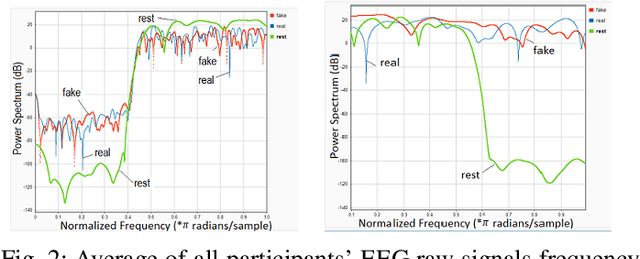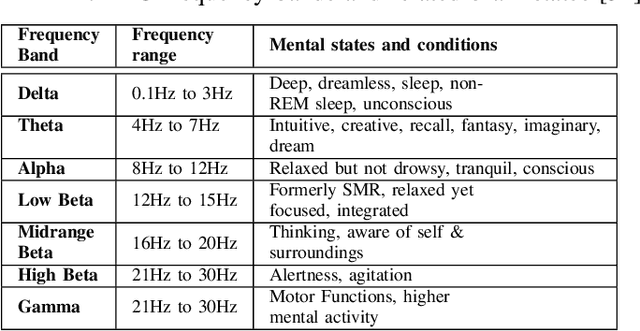Nitesh Saxena
MarkMatch: Same-Hand Stuffing Detection
May 11, 2025Abstract:We present MarkMatch, a retrieval system for detecting whether two paper ballot marks were filled by the same hand. Unlike the previous SOTA method BubbleSig, which used binary classification on isolated mark pairs, MarkMatch ranks stylistic similarity between a query mark and a mark in the database using contrastive learning. Our model is trained with a dense batch similarity matrix and a dual loss objective. Each sample is contrasted against many negatives within each batch, enabling the model to learn subtle handwriting difference and improve generalization under handwriting variation and visual noise, while diagonal supervision reinforces high confidence on true matches. The model achieves an F1 score of 0.943, surpassing BubbleSig's best performance. MarkMatch also integrates Segment Anything Model for flexible mark extraction via box- or point-based prompts. The system offers election auditors a practical tool for visual, non-biometric investigation of suspicious ballots.
LiteLMGuard: Seamless and Lightweight On-Device Prompt Filtering for Safeguarding Small Language Models against Quantization-induced Risks and Vulnerabilities
May 08, 2025Abstract:The growing adoption of Large Language Models (LLMs) has influenced the development of their lighter counterparts-Small Language Models (SLMs)-to enable on-device deployment across smartphones and edge devices. These SLMs offer enhanced privacy, reduced latency, server-free functionality, and improved user experience. However, due to resource constraints of on-device environment, SLMs undergo size optimization through compression techniques like quantization, which can inadvertently introduce fairness, ethical and privacy risks. Critically, quantized SLMs may respond to harmful queries directly, without requiring adversarial manipulation, raising significant safety and trust concerns. To address this, we propose LiteLMGuard (LLMG), an on-device prompt guard that provides real-time, prompt-level defense for quantized SLMs. Additionally, our prompt guard is designed to be model-agnostic such that it can be seamlessly integrated with any SLM, operating independently of underlying architectures. Our LLMG formalizes prompt filtering as a deep learning (DL)-based prompt answerability classification task, leveraging semantic understanding to determine whether a query should be answered by any SLM. Using our curated dataset, Answerable-or-Not, we trained and fine-tuned several DL models and selected ELECTRA as the candidate, with 97.75% answerability classification accuracy. Our safety effectiveness evaluations demonstrate that LLMG defends against over 87% of harmful prompts, including both direct instruction and jailbreak attack strategies. We further showcase its ability to mitigate the Open Knowledge Attacks, where compromised SLMs provide unsafe responses without adversarial prompting. In terms of prompt filtering effectiveness, LLMG achieves near state-of-the-art filtering accuracy of 94%, with an average latency of 135 ms, incurring negligible overhead for users.
When AI Defeats Password Deception! A Deep Learning Framework to Distinguish Passwords and Honeywords
Jul 24, 2024Abstract:"Honeywords" have emerged as a promising defense mechanism for detecting data breaches and foiling offline dictionary attacks (ODA) by deceiving attackers with false passwords. In this paper, we propose PassFilter, a novel deep learning (DL) based attack framework, fundamental in its ability to identify passwords from a set of sweetwords associated with a user account, effectively challenging a variety of honeywords generation techniques (HGTs). The DL model in PassFilter is trained with a set of previously collected or adversarially generated passwords and honeywords, and carefully orchestrated to predict whether a sweetword is the password or a honeyword. Our model can compromise the security of state-of-the-art, heuristics-based, and representation learning-based HGTs proposed by Dionysiou et al. Specifically, our analysis with nine publicly available password datasets shows that PassFilter significantly outperforms the baseline random guessing success rate of 5%, achieving 6.10% to 52.78% on the 1st guessing attempt, considering 20 sweetwords per account. This success rate rapidly increases with additional login attempts before account lock-outs, often allowed on many real-world online services to maintain reasonable usability. For example, it ranges from 41.78% to 96.80% for five attempts, and from 72.87% to 99.00% for ten attempts, compared to 25% and 50% random guessing, respectively. We also examined PassFilter against general-purpose language models used for honeyword generation, like those proposed by Yu et al. These honeywords also proved vulnerable to our attack, with success rates of 14.19% for 1st guessing attempt, increasing to 30.23%, 41.70%, and 63.10% after 3rd, 5th, and 10th guessing attempts, respectively. Our findings demonstrate the effectiveness of DL model deployed in PassFilter in breaching state-of-the-art HGTs and compromising password security based on ODA.
Is On-Device AI Broken and Exploitable? Assessing the Trust and Ethics in Small Language Models
Jun 08, 2024Abstract:In this paper, we present a very first study to investigate trust and ethical implications of on-device artificial intelligence (AI), focusing on ''small'' language models (SLMs) amenable for personal devices like smartphones. While on-device SLMs promise enhanced privacy, reduced latency, and improved user experience compared to cloud-based services, we posit that they might also introduce significant challenges and vulnerabilities compared to on-server counterparts. As part of our trust assessment study, we conduct a systematic evaluation of the state-of-the-art on-devices SLMs, contrasted to their on-server counterparts, based on a well-established trustworthiness measurement framework. Our results show on-device SLMs to be (statistically) significantly less trustworthy, specifically demonstrating more stereotypical, unfair and privacy-breaching behavior. Informed by these findings, we then perform our ethics assessment study by inferring whether SLMs would provide responses to potentially unethical vanilla prompts, collated from prior jailbreaking and prompt engineering studies and other sources. Strikingly, the on-device SLMs did answer valid responses to these prompts, which ideally should be rejected. Even more seriously, the on-device SLMs responded with valid answers without any filters and without the need for any jailbreaking or prompt engineering. These responses can be abused for various harmful and unethical scenarios including: societal harm, illegal activities, hate, self-harm, exploitable phishing content and exploitable code, all of which indicates the high vulnerability and exploitability of these on-device SLMs. Overall, our findings highlight gaping vulnerabilities in state-of-the-art on-device AI which seem to stem from resource constraints faced by these models and which may make typical defenses fundamentally challenging to be deployed in these environments.
Breaking Indistinguishability with Transfer Learning: A First Look at SPECK32/64 Lightweight Block Ciphers
May 30, 2024Abstract:In this research, we introduce MIND-Crypt, a novel attack framework that uses deep learning (DL) and transfer learning (TL) to challenge the indistinguishability of block ciphers, specifically SPECK32/64 encryption algorithm in CBC mode (Cipher Block Chaining) against Known Plaintext Attacks (KPA). Our methodology includes training a DL model with ciphertexts of two messages encrypted using the same key. The selected messages have the same byte-length and differ by only one bit at the binary level. This DL model employs a residual network architecture. For the TL, we use the trained DL model as a feature extractor, and these features are then used to train a shallow machine learning, such as XGBoost. This dual strategy aims to distinguish ciphertexts of two encrypted messages, addressing traditional cryptanalysis challenges. Our findings demonstrate that the DL model achieves an accuracy of approximately 99% under consistent cryptographic conditions (Same Key or Rounds) with the SPECK32/64 cipher. However, performance degrades to random guessing levels (50%) when tested with ciphertext generated from different keys or different encryption rounds of SPECK32/64. To enhance the results, the DL model requires retraining with different keys or encryption rounds using larger datasets (10^7 samples). To overcome this limitation, we implement TL, achieving an accuracy of about 53% with just 10,000 samples, which is better than random guessing. Further training with 580,000 samples increases accuracy to nearly 99%, showing a substantial reduction in data requirements by over 94%. This shows that an attacker can utilize machine learning models to break indistinguishability by accessing pairs of plaintexts and their corresponding ciphertexts encrypted with the same key, without directly interacting with the communicating parties.
EarSpy: Spying Caller Speech and Identity through Tiny Vibrations of Smartphone Ear Speakers
Dec 23, 2022Abstract:Eavesdropping from the user's smartphone is a well-known threat to the user's safety and privacy. Existing studies show that loudspeaker reverberation can inject speech into motion sensor readings, leading to speech eavesdropping. While more devastating attacks on ear speakers, which produce much smaller scale vibrations, were believed impossible to eavesdrop with zero-permission motion sensors. In this work, we revisit this important line of reach. We explore recent trends in smartphone manufacturers that include extra/powerful speakers in place of small ear speakers, and demonstrate the feasibility of using motion sensors to capture such tiny speech vibrations. We investigate the impacts of these new ear speakers on built-in motion sensors and examine the potential to elicit private speech information from the minute vibrations. Our designed system EarSpy can successfully detect word regions, time, and frequency domain features and generate a spectrogram for each word region. We train and test the extracted data using classical machine learning algorithms and convolutional neural networks. We found up to 98.66% accuracy in gender detection, 92.6% detection in speaker detection, and 56.42% detection in digit detection (which is 5X more significant than the random selection (10%)). Our result unveils the potential threat of eavesdropping on phone conversations from ear speakers using motion sensors.
Human Brains Can't Detect Fake News: A Neuro-Cognitive Study of Textual Disinformation Susceptibility
Jul 18, 2022



Abstract:The spread of digital disinformation (aka "fake news") is arguably one of the most significant threats on the Internet which can cause individual and societal harm of large scales. The susceptibility to fake news attacks hinges on whether Internet users perceive a fake news article/snippet to be legitimate after reading it. In this paper, we attempt to garner an in-depth understanding of users' susceptibility to text-centric fake news attacks via a neuro-cognitive methodology. We investigate the neural underpinnings relevant to fake/real news through EEG. We run an experiment with human users to pursue a thorough investigation of users' perception and cognitive processing of fake/real news. We analyze the neural activity associated with the fake/real news detection task for different categories of news articles. Our results show there may be no statistically significant or automatically inferable differences in the way the human brain processes the fake vs. real news, while marked differences are observed when people are subject to (real/fake) news vs. resting state and even between some different categories of fake news. This neuro-cognitive finding may help to justify users' susceptibility to fake news attacks, as also confirmed from the behavioral analysis. In other words, the fake news articles may seem almost indistinguishable from the real news articles in both behavioral and neural domains. Our work serves to dissect the fundamental neural phenomena underlying fake news attacks and explains users' susceptibility to these attacks through the limits of human biology. We believe this could be a notable insight for the researchers and practitioners suggesting the human detection of fake news might be ineffective, which may also have an adverse impact on the design of automated detection approaches that crucially rely upon human labeling of text articles for building training models
 Add to Chrome
Add to Chrome Add to Firefox
Add to Firefox Add to Edge
Add to Edge